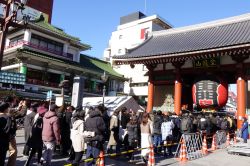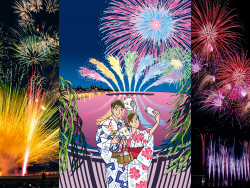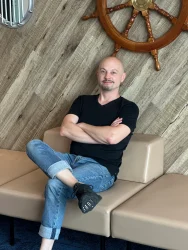
A New Age Approach to needles

 Hinemori Tomita’s naturally designed clinic is more teahouse than treatment center
Hinemori Tomita’s naturally designed clinic is more teahouse than treatment center
The acupuncture clinic owned by Hinenori Tomita is tucked away among the high-rises just down the road from Tokyo Dome. Tomita spent a lot of time trying to make his clinic feel like something out of the Edo era and he says some people visit more out of an interest in historical structures than a desire to get acupuncture.
What were you trying to accomplish with your clinic’s design?
Acupuncture is part of our culture and I wanted both my treatments and the setting I give them in to reflect a traditional, simple beauty—to be an oasis for my patients. My small clinic is more like a home than a place of business, and I tried to achieve the peace and grace of a traditional teahouse, letting the natural quality of the construction speak for itself. I wanted all aspects of my business to reflect this feeling. One patient said that after seeing my website, he thought I might be able to see his health problems in a different light than regular practitioners.
How did you become interested in acupuncture?
I was living in Honolulu when I started having really bad back pain. I went to a doctor but it didn’t help. A good friend recommended I go see Keiji Inuo, a veteran Japanese acupuncturist who’s lived in Hawaii for years. He treated me and I got better quickly. The results he got impressed me and kindled my interest in acupuncture. Even after I was cured, I’d visit his clinic to study with him or just bring something nice to drink together after the clinic closed for the day. When I came back to Japan, I worked at a major advertising firm for a while, but going back to school for an acupuncture degree was always in the back of my mind. Working for a big company was kind of boring, but I did learn about marketing and business, which has helped me run my clinic.
What are some of the difficulties you’ve had?
In Japan, acupuncture isn’t really considered part of the medical field, it’s more of a service industry. But even so, we should do it properly, having good design. Most practitioners just focus on their needling skills, they don’t think about the atmosphere of their clinic or the message they are sending to the public.
There are also some negative preconceptions about acupuncture; some people think it’ll be painful or are scared about moxa burns. Others see it as superstitious or related to some kind of sketchy religion. But at the same time, I’ve found that most people are subconsciously curious about acupuncture. When I’m out drinking and people find out I’m an acupuncturist, they’re very interested. So there’s this deep-down interest but they need some kind of extra push to actually think of making an appointment. Probably 40 percent of my patients had never been needled before; they came because they were curious.
Cost is another big reason people don’t go to acupuncture clinics. With national health insurance, almost everybody can afford to go to the doctor whenever they want. If people want acupuncture, they have to pay for it completely out-of-pocket. But even though cost is a big issue, it doesn’t mean everything could be solved by lowering prices. If people believe the benefits they get from acupuncture are greater than the price, they’ll flock to clinics. That is why communicating the benefits of treatment is so important.
So how do you get your message across?
People have huge levels stress—both physically and mentally—in our busy society, and acupuncture can be a solution for them in many ways. Since we practitioners already know this, we just need to convince the public that acupuncture can be an attractive alternative to regular doctors.
Most people come with pain symptoms like back aches or shoulder stiffness. But usually superficial aches and pains are related to internal imbalances. When I can show them this—like by making both their stiff shoulders and constipation get better—they’re very surprised. This is the best way to get people to believe in acupuncture, through experience-based medicine. If I just start off talking about ki or the channel system, it’ll scare them off. People need the experience to open the door.
The biggest hurdle is getting them into the clinic. That’s why I worked so hard making mine as attractive as possible. To lower that hurdle.
I think of every treatment as a story. If you just focus on tendons and muscles, you can’t tell a story. The language of Chinese medicine makes this easier to do. At the beginning, people might think what I’m saying sounds strange, but when their health problems start getting better, they start listening.
一鍼入魂堂 Isshin-nyukon-do (“soul in every needle” clinic), 2-22-6 Koishikawa, Bunkyo-ku, Tokyo. Tel: 03-3830-5099. Open Mon, Tue, Wed & Fri 9am-1pm & 4-8pm, closed Thu, Sat & Sun. Nearest stn: Korakuen. www.1shin.jp.







